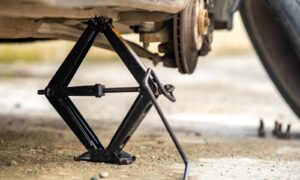Crafting your own camper is an exciting endeavor, fueled by the promise of adventure and the joy of creating a unique mobile sanctuary. Within this journey, a vital aspect is the installation of camper electrical systems. Developing a reliable and efficient electrical setup is not only important for comfort but also for ensuring safety during your travels. In this guide, we’ll delve into the intricate world of camper electrical or camper elektra installation, offering a comprehensive exploration of ten invaluable tips to empower you to tackle this aspect of your DIY camper build confidently.
-
Strategize Your Layout: Blueprint for Success
Before handling wires and components, invest time in meticulously planning your electrical layout. Visualize the placement of each appliance, outlet, switch, and lighting fixture. Thoughtful planning will save resources, time, and potential complications.
-
Calculate Power Requirements: Fueling Your Journey
Determining your power needs forms the foundation of your camper’s electrical setup. Compile a detailed list of the appliances and devices you intend to use regularly. This inventory will guide you in selecting the appropriate battery capacity, inverters, and solar panels to meet your power demands.
-
Safety First: Shielding Against Hazards
When working with electricity, prioritizing safety is paramount. Focus on proper grounding to prevent potential electrical issues. Incorporate circuit breakers to protect against overloads and potential fire risks. Investing in reputable surge protectors is a wise move to safeguard your investment.
-
Embrace Quality Components: Building Blocks of Reliability
The integrity of your electrical system hinges on the quality of its components. Opt for trusted brands when choosing wiring, connectors, switches, and other essentials. Choosing high-quality components ensures longevity and dependable performance.
-
Optimize Energy Efficiency: Sustainable Power Solutions
Given the nature of camper living, energy efficiency is a must. Embrace LED lighting, energy-efficient appliances, and intelligent systems that minimize power consumption without compromising convenience. Sustainable power solutions enhance your off-grid adventures.
-
Master Wiring Techniques: Neatness and Precision
Regardless of your DIY expertise, mastering proper wiring techniques is crucial. Neat and secure wiring prevents loose connections, minimizes voltage drops, and reduces the risk of potential fire hazards. A well-organized setup reflects professionalism.
-
Leverage Solar Power: Tapping into Nature’s Resources
Integrating solar panels into your camper’s design offers an eco-friendly solution for keeping your batteries charged. Solar power elevates your off-grid capabilities and grants you the freedom to generate your electricity, reducing dependence on external power sources.
-
Design a Charging Hub: Organized Power Center
Create a designated charging hub within your camper for devices like phones, laptops, and cameras. Centralizing your charging station ensures that your devices are charged and neatly organized, eliminating the hassle of searching for outlets and untangling cords.
-
Thorough Testing: Ensuring Seamless Functionality
Before embarking on your inaugural journey, conduct comprehensive testing of each component in your electrical system. From outlets to switches, ensure everything operates as intended. This proactive approach prevents potential issues during your travels.
-
The Power of Labels: Clarity and Efficiency
Completing your electrical installation with clear and informative labels is a small yet impactful step. Properly labeled switches, outlets, and fuse boxes simplify troubleshooting and adjustments, streamlining your camper experience.
11: Create a Camper electrical diagram
Having a well-crafted camper electrical diagram is of paramount importance in your DIY camper project. This visual representation acts as a blueprint for your entire electrical system, illustrating connections, components, and circuits in a clear and organized manner. An intricate electrical diagram not only enhances your comprehension of the system but also serves as a valuable reference during installation, troubleshooting, and future maintenance. It facilitates a proactive approach to detecting potential issues, ensuring safety, and simplifying repairs, making it an indispensable asset for any camper enthusiast. Whether you’re an experienced builder or a novice, a comprehensive electrical diagram offers peace of mind, empowering you to approach your camper’s electrical installation with confidence and expertise.
-
Optimize Solar Panel Placement: The Sun’s Embrace
When integrating solar panels or zonnepaneel camper into your camper’s electrical system, optimal placement is crucial. Ensure that your panels are positioned in an area that receives ample sunlight throughout the day. The roof is a popular choice, but consider potential obstructions such as roof accessories or shading from nearby objects. Tilt and angle the panels to match your geographic location’s solar angle for maximum efficiency. Regularly clean and inspect the panels to prevent dirt and debris buildup that could hinder their performance. By harnessing the full potential of solar energy, you’ll not only reduce your reliance on external power sources but also enhance your camper’s off-grid capabilities, enabling you to enjoy extended adventures powered by the sun’s energy.
Conclusion
In conclusion, as you embark on the captivating journey of building your own camper, mastering the realm of camper electrical installation is an endeavor that should not be underestimated. By adhering to the essential tips outlined in this guide, you’re equipped with the knowledge and insights to navigate the complexities of camper electrical systems with confidence. From strategic planning and meticulous wiring techniques to embracing sustainable energy solutions and leveraging the power of solar panels, each step contributes to a seamless and efficient electrical setup.
Furthermore, recognizing the significance of a well-crafted camper electrical diagram adds an extra layer of preparedness to your project. This visual guide ensures that your electrical connections are well-organized, easily comprehensible, and ultimately functional. It’s a tool that empowers you to be proactive in addressing potential issues and simplifying maintenance in the future.
Remember, the process of building your own camper is not just about creating a mobile living space; it’s a journey that reflects your creativity, determination, and passion for exploration. As you put these tips into action and witness the fruits of your labor, you’re not just building a camper – you’re crafting memories and embarking on adventures that will be cherished for years to come.
Finally, for those seeking an extra layer of guidance and expertise, by NOMADS stands as an invaluable resource. Their platform offers comprehensive insights, step-by-step tutorials, and a community of fellow enthusiasts to support you throughout your DIY camper journey. With the right tools and knowledge at your disposal, there’s no limit to what you can achieve. So, take the wheel, embrace the challenge, and set forth on a path of building a camper that’s not just a vehicle, but a reflection of your dreams and aspirations. Your camper, your adventure, and your journey await!



































